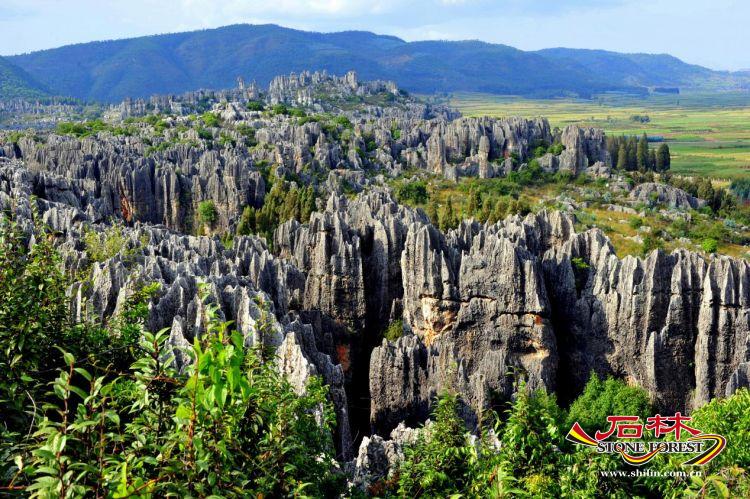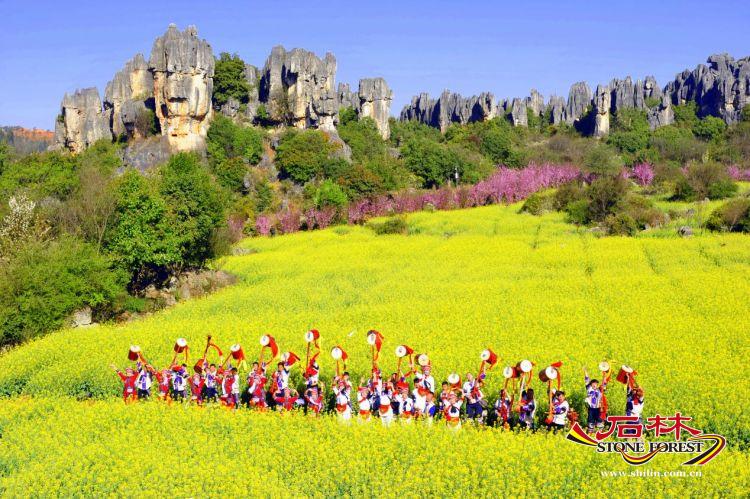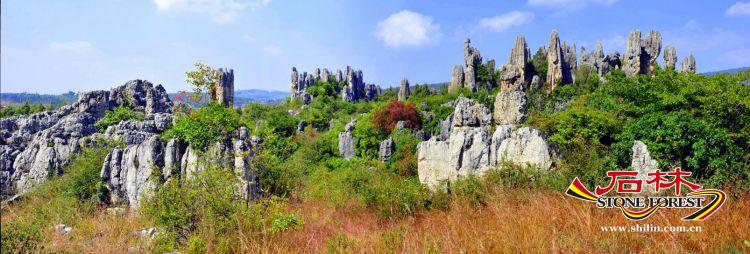- Children from Shijin Kindergarten Made a Study Trip to Shilin UGGp
- Have a spring date with Shilin flowers
- Call for hosts of the 12th International Conference on UNESCO Global Geoparks in 2027
- Call for applications: UNESCO Global Geopark Mentorship Exchange
- Representatives of Changshan Aspring UGGp Visited Shilin UGGp
- Shilin UGGp Visited Xingyi Aspiring UGGp
- Children from Peiqi Kindergarten Visited Shilin UNESCO Global Geopark
The Naigu Stone Forest Area
“Naigu” means “black” in Yi language. Naigu Stone Forest lies in the north of the Stone Forest (Shilin) Geopark. The carbonate stratum in which the stone forest karst developed is dolomitic limestone of Qixia formation, the Middle Permian. Compared with pure limestone, dolomitic limestone is more resistant to weathering and water solution, therefore it is hard to develop into typical pinnacle karst. But Naigu Stone Forest is an exception, here pinnacle clusters are of 20-40m in height and the rock surface are fretted with razor-sharp edges and rillenkarren.

Naigu Stone Forest Clusters (photo by Wang Limei)
The lithology of the Qixia Formation imparts a very distinctive appearance to the pinnacles. At the base is a massive, homogeneous gray carbonate that appears to be pure calcite. It forms a plinth for many pinnacles and displays particularly smooth and regular rounding forms in the roundkarren that dissects it. Above this are approximately 1.5m of medium bedded limestone, the comparative thinness makes this a weak unit that is recessive. It forms narrow necks beneath the massive upper unit in many of the pinnacles, giving them the appearance of ornamental pots or mushrooms.

Naigu pinnacle karst (photo by Li Kun)
The upper unit is a very massive dolomitic limestone. The dolomite takes the form of individual blebs that are a few centimeters in length and width. They are more resistant to solution than the fine-grained calcite matrix and thus stand out 12cm from the surface. This gives the rock a remarkable, unusual speckled appearance.
The rocks here also host dark algae species so they appear dark gray or black, in contrast to the gray-shade of stone forest clusters of pure limestone. Sheltered recesses and some overhung rock faces are not colonized by these algae, however, instead they display orange to yellow weathering colors, typical of many dolomitic rocks. The contrast of black and orange colors on the rock is another strong and striking feature of the Naigu Stone Forest area.

Spring scenery of the Naigu Stone Forest Area (photo by Wang Limei)
A cave (Bailong Cave) occurs beneath a major pinnacle cluster. Being only 800m long or so, the cave contains most common features of karst cave, stalactite, stalagmite, rimstone-dam, etc. There is also a subterranean river in the cave, and since the Naigu Stone Forest is the source area of the Bajiang River, the water acts as the current erosion basis and the area illustrates the interrelationship of karst landform and hydrogeology.

Source area of the Bajiang River in the Naigu Stone Forest Area (photo by Wang Limei)
The aesthetic appeal of the Naigu Stone Forest is that the striking, dark-gray color and spectacular pinnacle inspire many imaginations. Looked from distance the Naigu resembles solemn castles, standing out of the relative flat field. Together with the adjacent red-soil farmland and other associated karst feature, the Naigu Stone Forest Area exhibits natural beauty second to none.

Distant view of Naigu Stone Forest Area (photo by Wang Limei)
